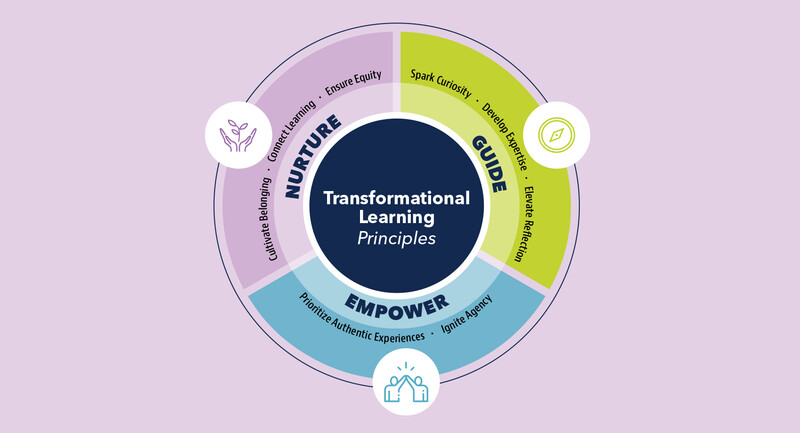October 1, 2022
•
•
Vol. 80•
No. 2High-Quality Teaching > High-Fidelity Teaching
To lift student learning, teachers often need to tweak the strategies we show them.
Credit: KOVALTO1 / SHUTTERSTOCK
When I started as a professional developer, I felt a great responsibility to tell teachers they had to implement what I was sharing exactly as I described it. I'd personally seen students get results from the strategies I was explaining and research that had been done. I thought if teachers wanted to get the results described in the research, they had to teach the strategies with fidelity. I gave teachers an instructor's manual with a script and went through it with them, explaining in great detail exactly what teachers were to do. "You really shouldn't try this," I'd say, "unless you commit to doing it correctly."
But when I observed teachers implementing the strategies, I discovered that, in fact, no two teachers used the strategies the same. Those who implemented the practices I'd outlined had to adapt the strategies to fit them into their classrooms. Some teachers even turned away from the strategies just because I told them that these practices had to be followed with fidelity. Most troubling, even I wasn't teaching the strategies with fidelity. I didn't have time to do everything in my teachers' manual, so I had to do the best I could, given the time I had.
After my first years presenting, I made up my mind to learn as much as I could about professional learning. I interviewed a lot of teachers and wrote about some of their perceptions of PD for a research study. Looking back on those interviews, I see three reasons why a narrow focus on fidelity likely wasn't effective then—and won't be today.
Stressing fidelity diminishes teachers. Telling teachers exactly how they are supposed to teach leaves little room for them to share their own ideas, knowledge, and expertise. At worst, too much focus on fidelity can lead teachers to feel like they're working on an assembly line putting widgets together rather than engaging in the complex, important art of inspiring and educating tomorrow's leaders. Also, a fidelity-focused approach is grounded in the assumption that you can get people to learn just by telling them how to do something. However, everything we know about learning and motivation shows us that we can't force people to learn. Most adults—I am one of them—are skilled at nodding in agreement while passively choosing not to do something.
One size doesn't fit all. When researchers describe complex work, they often use parenting as an example. If raising one child is complex work, how much more complex is it to teach 20 or 30 students in a classroom? In an environment as complex as a classroom, a one-size-fits-all approach won't work. Each child brings their own complex needs, beliefs, habits, and skills. What works for one group or individual student will likely need to be taught differently for another group or individual.
The checklist becomes the focus. Intensive focus on fidelity can turn educators' attention away from what really matters in the classroom: student learning and well-being. The only reason for teaching with fidelity should be to have an unmistakable, positive impact on students. But it's possible that a teacher could do every move described on an implementation checklist and still fail to engage students.
Accepting poor quality implementation of practices isn't the solution. We all want students to have higher achievement and more well-being, so we want every student to experience excellent instruction—and better teaching does lead to better learning. So how can we encourage professional growth (and for one to be professional, growth needs to be present) if we ignore fidelity? I have three suggestions.
Listen to teachers. Rather than force-feeding teachers about practices, start by asking them to set the direction for their professional growth by setting goals that will make a powerful difference in students' lives. Coaches can help teachers set those goals by asking questions that invite teachers to reflect deeply on how they teach and how students learn. Simply asking, "What are your students not doing now that you want them to do?" can open the door to powerful goals relevant to teachers and students.
Encourage teachers to adapt strategies. This suggestion appears to be the exact opposite of teaching with fidelity, but complex tasks like teaching require adaptive responses. Adapting practices is often fairer to students—and teachers—because we all have diverse needs. But how do we know that the changes a teacher makes will still lead to effective teaching?, you might ask. Read on to the next suggestion. …
Focus on students. To get the most effective teaching, we must make student learning and well-being the standards for defining high-quality teaching, not teachers hitting the boxes on a checklist. When teachers set compelling student-focused goals for engagement or achievement, they establish an objective standard for judging how effectively they are implementing new practices. The standard for excellence in teaching should always be student growth.
Coaches can encourage a focus on student growth by asking a teacher a simple question: "When you implement this strategy, what should be different for students?" Their answer should guide that teacher to set a student-focused, rather than strategy-focused, goal that can drive their professional learning. Once the goal is set, a coach and teacher can gather ongoing data on student progress and modify the teaching strategy until the student-focused goal is achieved. Rarely will a poorly implemented practice be the catalyst for great student growth.
Encouraging teachers to use their professional judgment to adapt recommended strategies to hit a student-focused goal might not represent perfect fidelity, but it should lead to our children learning more. Sounds like high-quality instruction to me.









